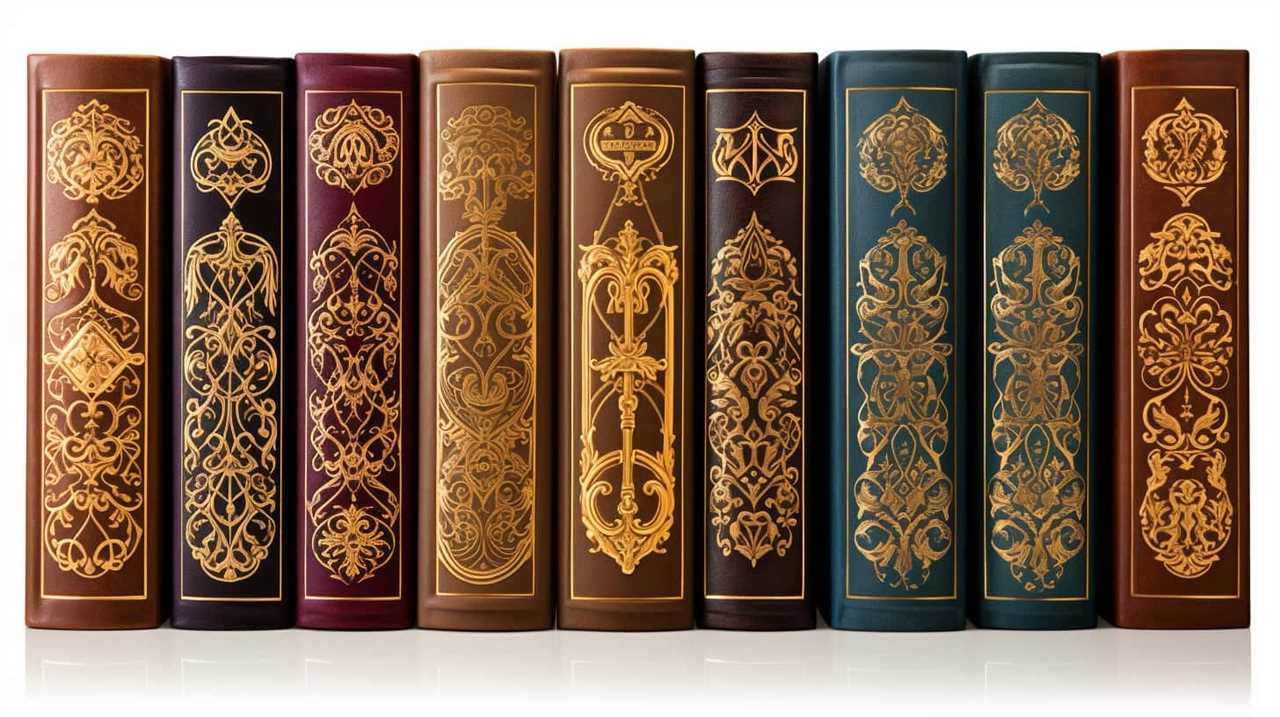Welcome to ‘Wisdom From the Vedas: Uplifting Ancient Verses’ – an enlightening exploration through the ancient wisdom that has stood the test of time.
Discover the cosmic secrets, transcend the limitations of the mind, and unravel the eternal cycle of life and death.
Immerse yourself in the profound teachings that unveil the true nature of the self and guide you towards inner peace and serenity.
As we explore the sacred verses, we will cultivate compassion and kindness, embracing the interconnectedness of all beings.

These ancient texts serve as a guiding light, nurturing our spiritual growth and enlightenment.
Together, let us embody the principles of truth and righteousness, and embark on a path of mastery, unlocking the ancient wisdom of the Vedas.
Key Takeaways
- Cosmic order and divine harmony: The Vedas explain the concept of cosmic order and divine harmony, emphasizing the interconnectedness of all things and the grand orchestration of the universe.
- Transcending the limitations of the mind: To tap into infinite wisdom, we must transcend the limitations of our minds by letting go of old ways of thinking and being open to new possibilities and perspectives.
- The eternal cycle of life and death: The Vedas reveal insights into the eternal cycle of life and death, highlighting the importance of learning and growth, the impact of our actions on future experiences, and the possibility of liberation through self-realization and spiritual practice.
- Unveiling the true nature of the self: The Vedas guide us in uncovering the true nature of ourselves through self-awareness, questioning assumptions and beliefs, and facing our fears and insecurities.
- Nurturing spiritual growth and enlightenment: The ancient texts of the Vedas nurture spiritual growth and enlightenment through practices such as meditation, self-reflection, self-inquiry, and embodying principles of truth and righteousness.
Cosmic Order and Divine Harmony
One of the fundamental principles explained in the Vedas is the profound concept of the cosmic order and how it establishes divine harmony in the universe. The ancient sages understood that everything in existence is interconnected, forming a cosmic balance that ensures the smooth functioning of the universe. They recognized that this universal order isn’t arbitrary but rather a result of a divine plan, meticulously designed and sustained by the cosmic intelligence.
The concept of cosmic balance teaches us that each individual element, be it a star, a planet, or a blade of grass, has a unique role to play in the grand orchestration of the universe. Just as every note in a symphony contributes to the overall harmony, so too does every being contribute to the cosmic balance. This understanding brings us a sense of awe and wonder, as we realize that we’re part of a much larger whole, intricately woven into the fabric of existence.

Transcending the Limitations of the Mind
To truly tap into the infinite wisdom within us, we must transcend the limitations of our own minds. Our minds can often be like a small box, confined by our beliefs, experiences, and conditioning. But if we want to expand our consciousness and access higher levels of understanding, we must be willing to break free from these limitations.
Transcending the limitations of the mind means going beyond what we think we know, and opening ourselves up to new possibilities and perspectives. It requires us to let go of our attachments to old ways of thinking and be open to the unknown. It’s in this space of openness and curiosity that we can discover new insights and truths that were previously hidden from us.
Expanding our consciousness is a lifelong journey, and it requires dedication, discipline, and a willingness to explore the depths of our own minds. It isn’t always easy, as we may encounter resistance and fear along the way. But the rewards are immense. As we transcend our limitations, we gain access to a higher level of wisdom and understanding that can transform our lives and the lives of those around us.
The ancient verses of the Vedas offer us guidance and inspiration on this path of transcending limitations and expanding consciousness. They remind us that we aren’t limited by our thoughts, but rather, we’ve the power to go beyond them and tap into the infinite wisdom that lies within us. Through practices such as meditation, self-reflection, and self-inquiry, we can quiet the mind and connect with our true essence, allowing us to access a higher level of consciousness.

The Eternal Cycle of Life and Death
The Vedas provide insight into the eternal cycle of life and death, revealing the interconnectedness of our existence. Within the vast wisdom of these ancient texts, we find profound teachings on the cycle of rebirth, karma, and liberation.
Here are three key insights that shed light on this eternal cycle:
- The Cycle of Rebirth: The Vedas teach us that life and death aren’t separate events, but rather part of an ongoing cycle. Just as the sun rises and sets, our souls go through the cycle of birth, death, and rebirth. This cycle allows us to learn, grow, and evolve through countless lifetimes.
- Karma: The Vedas emphasize the law of cause and effect, known as karma. Every action we take, whether good or bad, creates an energetic imprint that shapes our future experiences. Understanding the law of karma empowers us to make conscious choices and take responsibility for our actions, knowing that they’ll ultimately determine our destiny.
- Liberation: While the cycle of rebirth may seem endless, the Vedas offer the path of liberation. Through self-realization and spiritual practice, we can transcend the cycle and attain moksha or liberation. This liberation frees us from the cycle of birth and death, allowing us to merge with the divine and experience eternal bliss.
In contemplating the eternal cycle of life and death, we’re reminded of the profound interconnectedness of all beings. Each life we live, each action we take, contributes to the greater tapestry of existence. By understanding and embracing this cycle, we can navigate life with wisdom, compassion, and purpose, ultimately seeking liberation from the limitations of the material world.
Unveiling the True Nature of the Self
As individuals, we can uncover the true nature of ourselves by delving into the depths of our own consciousness. The Vedas, ancient texts of wisdom, offer guidance on uncovering inner wisdom and exploring self-awareness. Through introspection and reflection, we can tap into the vast reservoir of knowledge that lies within us.

To uncover our inner wisdom, we must first cultivate self-awareness. This involves observing our thoughts, emotions, and actions without judgment or attachment. By becoming aware of our patterns, beliefs, and conditioning, we can begin to discern what’s true and authentic within ourselves. This process requires courage and a willingness to face our fears and insecurities.
Exploring self-awareness also involves questioning our assumptions and beliefs. By examining the stories we tell ourselves and the narratives we’ve inherited, we can separate the truth from the illusions. This process of inquiry allows us to gain a deeper understanding of ourselves and the world around us.
By uncovering the true nature of ourselves, we can attain inner peace and serenity. When we align with our authentic selves, we experience a sense of harmony and balance. We’re no longer driven by external validation or societal expectations. Instead, we find contentment and fulfillment in being true to ourselves.
In the next section, we’ll delve into the practices and teachings that can help us attain this inner peace and serenity.

Attaining Inner Peace and Serenity
We can achieve a profound sense of inner peace and serenity by cultivating mindfulness and embracing the present moment. In our quest for achieving inner tranquility and finding inner calmness, there are certain practices that can guide us on this transformative journey:
- Meditation: Engaging in regular meditation allows us to quiet the mind, become aware of our thoughts and emotions, and connect with our innermost being. Through meditation, we can observe the fluctuations of the mind and learn to detach from them, finding a sense of stillness and peace within.
- Self-reflection: Taking the time to reflect on our thoughts, actions, and experiences can provide valuable insights into ourselves and our lives. By honestly examining our beliefs, values, and patterns, we can identify areas that may be causing inner turmoil and work towards resolving them.
- Gratitude: Cultivating an attitude of gratitude helps shift our focus from what’s lacking to what’s present in our lives. When we consciously acknowledge and appreciate the blessings and beauty around us, we foster a sense of contentment and peace. Gratitude reminds us of the abundance that exists within and around us, allowing us to experience inner calmness.
Cultivating Compassion and Kindness
As we explore the wisdom from the Vedas, we now turn our attention to the profound teachings on cultivating compassion and kindness.
These ancient verses remind us of the power of compassionate actions towards all beings, emphasizing that kindness is the very foundation of life itself.
In a world that often seems divided, the Vedas offer us a timeless reminder to embrace compassion and kindness as guiding principles, allowing us to create a more harmonious and interconnected world.

Compassionate Actions Towards All
Through practicing compassion and kindness towards all, we can foster a more harmonious and inclusive society. The Vedas teach us the importance of compassionate actions and universal empathy. Here are three ways in which we can cultivate compassion and kindness:
- Extend a helping hand: Be proactive in offering assistance to those in need. Whether it’s lending a listening ear, providing support, or volunteering your time, small acts of kindness can make a big difference in someone’s life.
- Practice empathy: Put yourself in the shoes of others and try to understand their perspective. By developing empathy, we can foster deeper connections and build bridges of understanding.
- Spread positivity: Be a source of positivity and kindness in the world. Smile at strangers, offer words of encouragement, and show gratitude for the people and things around you. Your positive energy won’t only uplift others but also contribute to a more compassionate society.
By embracing these practices, we can create a ripple effect of compassion and kindness, transforming our communities and the world at large.
Let’s strive to be the change we wish to see, and together, we can build a more compassionate and inclusive society.
Kindness as Life’s Foundation
Cultivating compassion and kindness serves as the bedrock of a fulfilling life, allowing us to connect with others on a deeper level and create a more harmonious world.

The power of empathy is a force that can transform not only our own lives but also the lives of those around us. When we approach each interaction with kindness, we create a ripple effect that spreads love and positivity.
Acts of kindness in daily life can be as simple as offering a helping hand to someone in need, or a genuine smile to brighten someone’s day. These small gestures may seem insignificant, but they have the power to uplift spirits and restore faith in humanity.
Embracing the Interconnectedness of All Beings
As we explore the ancient wisdom of the Vedas, we’re reminded of the profound interconnectedness of all beings. The Vedas teach us that there’s a unity in all existence, a collective consciousness that binds us together.
When we embrace this interconnectedness, we begin to see that our actions and choices have a ripple effect on the world around us. It’s through this understanding that we can cultivate compassion, kindness, and a deep sense of responsibility for the well-being of all beings.

Unity in All Existence
Regularly practicing mindfulness allows us to recognize and embrace the interconnectedness of all beings. It’s through this practice that we come to understand the profound truth of universal interconnectedness. We begin to see that we aren’t separate entities, but rather interconnected parts of a greater whole. This realization leads us to appreciate the beauty of oneness in diversity.
Here are three insights that can guide us on this journey:
- Embracing diversity: When we acknowledge and celebrate the uniqueness of each individual, we foster a sense of unity. Recognizing that we’re all connected despite our differences allows us to appreciate the richness that diversity brings to our lives.
- Cultivating empathy: By cultivating empathy, we develop the ability to understand and share the feelings of others. This deepens our connection with those around us, fostering a sense of unity and compassion.
- Practicing interconnectedness: Engaging in acts of kindness and service strengthens our sense of interconnectedness. When we extend a helping hand to others, we recognize that their well-being is intimately connected to our own.
As we continue to practice mindfulness and embrace the interconnectedness of all beings, we come to realize that unity isn’t just a concept, but a living reality that can transform our lives and the world around us.
Embracing Collective Consciousness
Embracing our collective consciousness deepens our understanding of the interconnectedness of all beings. It’s through recognizing our shared existence and interconnectedness that we can truly appreciate the power of collective responsibility.

Each individual’s actions ripple out and have an impact on the whole. When we come together in harmonious collaboration, we unlock our potential to create positive change on a grand scale.
In embracing our collective consciousness, we acknowledge that we aren’t separate entities, but rather interconnected threads woven into the fabric of life. We understand that our choices and actions affect not only ourselves, but also the well-being of all beings.
This awareness calls us to take responsibility for our actions, to act with compassion and kindness, and to work together towards a more harmonious and sustainable future.
Nurturing Spiritual Growth and Enlightenment
We actively cultivate spiritual growth and enlightenment through our engagement with the timeless wisdom of the Vedas. The Vedas, ancient scriptures of India, hold profound insights into the nature of our existence and provide guidance on how to navigate the journey towards spiritual awakening and self-realization.

Here are three ways in which we nurture our spiritual growth:
- Study and Reflection: We dive deep into the teachings of the Vedas, immersing ourselves in their profound wisdom. Through careful study and reflection, we gain a deeper understanding of the nature of reality and our place within it. We contemplate the ancient verses, seeking to unveil their hidden truths and apply them to our own lives.
- Meditation and Contemplation: We understand that true spiritual growth requires going beyond intellectual understanding. We practice meditation and contemplation to connect with our inner selves and the divine source. By stilling our minds and turning inward, we open ourselves to higher levels of consciousness, allowing for profound spiritual experiences and insights.
- Living with Awareness: We strive to integrate the wisdom of the Vedas into our daily lives. We cultivate mindfulness and awareness in our actions, thoughts, and interactions with others. By aligning our actions with spiritual principles such as truth, compassion, and non-violence, we create an environment conducive to our own spiritual growth and the growth of those around us.
Through these practices, we embark on a transformative journey towards spiritual awakening and self-realization. The Vedas serve as our guide, offering timeless wisdom that illuminates the path ahead. As we actively engage with this ancient knowledge, we awaken to the inherent divinity within ourselves and all of creation.
Embodying the Principles of Truth and Righteousness
As we delve deeper into the timeless wisdom of the Vedas, we embody the principles of truth and righteousness, aligning our actions with the divine teachings to lead a purposeful and virtuous life. Embracing ethical values and practicing moral principles form the cornerstone of our spiritual journey. The Vedas, with their profound insights, guide us towards a life of integrity and righteousness.
Embodying the principles of truth and righteousness requires us to consciously align our thoughts, words, and actions with these values. It isn’t enough to simply profess these principles; we must live them in our daily lives. We must cultivate honesty, integrity, and compassion in all our interactions, treating others with respect and kindness.

By embracing ethical values and practicing moral principles, we become beacons of light in a world that often finds itself lost in darkness. We inspire others to follow the path of righteousness, leading by example and uplifting those around us.
The Vedas teach us that living a virtuous life isn’t easy, but the rewards are immeasurable. When we embody truth and righteousness, we experience inner peace, joy, and a deep sense of fulfillment. We become more aligned with our higher selves and are able to make a positive impact on the world.
Incorporating the principles of truth and righteousness into our lives requires discipline and self-reflection. We must constantly examine our thoughts, words, and actions, striving to align them with the divine teachings. It’s through this continuous practice that we grow spiritually and contribute to the betterment of ourselves and society.
Let us embrace ethical values and practice moral principles, knowing that in doing so, we aren’t only leading a purposeful and virtuous life, but also creating a better world for future generations. May we be guided by the wisdom of the Vedas and embody truth and righteousness in all that we do.

Frequently Asked Questions
How Do the Vedas Explain the Concept of Cosmic Order and Divine Harmony?
The Vedic perspective on cosmic balance and divine harmony is profound. It teaches that the universe operates under a cosmic order guided by divine intelligence. Understanding and aligning with this harmony leads to true mastery and fulfillment in life.
What Are Some Practical Ways to Transcend the Limitations of the Mind, According to the Vedas?
To transcend the limitations of the mind, we must expand our consciousness. By delving into the depths of our being, we unlock the infinite wisdom within, allowing us to soar beyond our perceived boundaries.
Can the Vedas Provide Insights Into the Eternal Cycle of Life and Death?
The Vedas provide profound insights into the eternal cycle of life and death, shedding light on the intricate web of reincarnation beliefs. Through sacred rituals and ceremonies, we find solace in embracing the wisdom of this timeless wisdom.
How Does the Vedic Wisdom Unveil the True Nature of the Self?
In the Vedas, we discover profound insights about the true nature of the self. This ancient wisdom remains relevant in modern times, reminding us of the importance of meditation in uncovering our innermost essence.

Are There Specific Techniques or Practices Mentioned in the Vedas for Attaining Inner Peace and Serenity?
There are various techniques and practices mentioned in the Vedas for attaining inner peace and serenity. By following these ancient wisdom, we can cultivate a calm mind and experience profound tranquility within ourselves.
Can the Vedas Provide Guidance for Finding Life’s Purpose?
The Vedas are a treasure trove of wisdom, offering profound insights into unlocking life’s purpose scriptures. With their timeless teachings, they provide guidance on discovering one’s true calling and navigating life’s journey with purpose and meaning. For seekers looking for direction, the Vedas offer invaluable wisdom to illuminate the path ahead.
Conclusion
In the grand tapestry of life, the wisdom of the Vedas shines as a beacon of light, guiding us towards a deeper understanding of ourselves and the universe.
As we delve into their ancient verses, we’re reminded of the interconnectedness of all beings and the importance of cultivating compassion and kindness.
Yet, in our fast-paced modern world, we often find ourselves disconnected from these profound teachings.

Let’s pause, reflect, and embrace the timeless wisdom of the Vedas, for within their words lie the keys to inner peace and enlightenment.
Fritz is a writer whose humor and wit infuse life into words. His creativity, combined with a profound love for the English language, makes him a unique voice at afterQuotes. Fritz’s engagement with books, culture, and social media adds depth to his contributions, making them resonate with our diverse audience.










